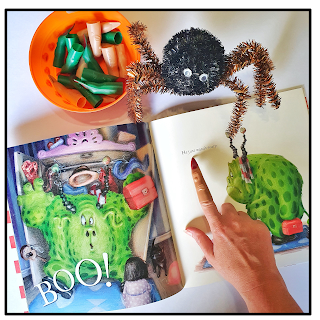





My Grade 4s are now half-way through our Weathering and Erosion Science Unit and we are digging into many non-fiction books to help us learn the knowledge we'll need to apply to different scenarios in our assessment.
Here are some of the books we have been loving, both for teaching (short snippets) and own choice reading.

It took me by surprise my first year of teaching Year 4 when I saw how engaged and into rocks my class was when learning about weathering and erosion. And year after year, it holds true that this is their favourite science unit! It's also my favourite to teach. I get excited every year when we do this unit. I've also been known to collect and carry rocks back from long and difficult hikes just because I thought the kids would love them!
So here are a 10 quick and easy activities you can implement tomorrow during your rocks, weathering and erosion science unit.
1. Get Outside
Walk around the school ask and students to look for signs
of weathering and erosion. Identify the causes of the rocks breaking down and
the agents of erosion that moved the sediments to a new location. This is a
great activity to identify REAL examples and to reinforce appropriate
vocabulary to talk about these changes to the Earth’s surface.
Tip: Students can take photos to annotate and record the signs and possible causes of erosion on their iPad’s as they are walking around.
Kids love looking at rocks! Ask them to bring in rocks from home and collect interesting rocks yourself. You can also purchase small gem kits from Scholastic. Put the rocks on display with some magnifying glasses and bowls to sort by observable characteristics and your only problem will be keeping the kids away!
3. Get Hands-On
Let the kids see weathering and erosion in action by doing hands-on activities that investigate chemical and physical weathering with simple materials like sugar cubes, sandpaper and a little vinegar!To investigate erosion, I take the kids to the sandpit and make some sandcastles! We conduct fair tests to see the effect different amounts of water has on the sandcastles. Later we test and demonstrate how different erosion prevention strategies, such as planting trees and plants, work on the sandcastles under the same conditions.
Use Google Earth to look at landforms from around the world
such as Wave Rock in Western Australia, the Hoodoos in Bruce Canyon or Giant’s
Causeway in Northern Ireland. The kids could explore Google Earth all day if I let them!
5. Anchor Learning
Create a chart together that shows the Weathering, Erosion and Deposition process. Students love drawing this one found all over google in their Science Journals.
6. Read Books
Put a range of good quality books at a range of reading
levels with your rock sorting or Observation Station and have them available as free choice
reading.
Repurpose the earlier photos from around the school later in
the unit to apply erosion prevention strategies.
Students can use apps like Explain Basics or SeeSaw to draw, annotate and record the strategies they would use to fix and prevent further erosion in an area.
8. Review Key Vocabulary
Who doesn’t love a good word search or cross word? Cross Words are great in helping kids remember definitions of key words that you need them to know and use!
9. Watch a Video
Magic School Bus “Rocks and Rolls” anyone? Also check out some good videos by Crash Course Kids on YouTube like Weathering and Erosion and The Grand Canyon. Make Your Own Erosion is another good one (do the investigation too!). You can also find before and afters of natural landforms such as the 12 Apostles in Victoria, Australia. Scrat’sContinental Crack Up is a fun video to watch when introducing the topic at the start of the unit.
10. Complete a Crossword
Review important vocabulary and definitions with a crossword! Visit my store for a fun and engaging Crossword for only $1!
So that's it! 9 (+ 1 bonus!) easy but fun weathering and erosion activities to add next time you do this unit. What are your fun ideas? Share them in the comments!